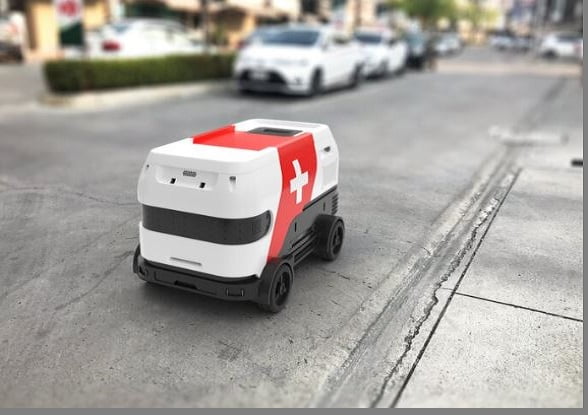In Singapore, healthcare accessibility is a basic part of guaranteeing the well-being of the populace. While emergency ambulances assume an urgent part in answering life-threatening situations, non-emergency ambulances in Singapore have arisen as an essential part of improving healthcare services.
In this article, we will investigate the meaning of a non emergency ambulance in Singapore and how they add to further developing healthcare accessibility for people in need.
Understanding Non-Emergency Ambulances:–
Non emergency ambulances, otherwise called patient vehicle services, are extraordinarily prepared vehicles that are intended to ship patients whose medical conditions don’t need immediate emergency care. These ambulances are staffed by trained medical personnel who offer vital help and care during transportation.
Catering to Specialized Medical Needs
One of the critical advantages of a non emergency ambulance service in Singapore is their capacity to take care of specialized medical needs. Patients with chronic illnesses, mobility issues, or undergoing medical treatments frequently require transportation that obliges them to their particular prerequisites. Non-emergency ambulances are outfitted with medical hardware, for example, stretchers, oxygen supply, and wheelchair accessibility, guaranteeing a safe and comfortable excursion for patients with different healthcare needs.
These ambulances are staffed by healthcare professionals who are trained to handle different medical conditions and emergencies that might emerge during transportation. They can give indispensable medical intercessions and support, guaranteeing that patients get fitting care even while being moved to their objective. This specialized care guarantees the well-being and comfort of patients all through the excursion, which is especially significant for people with fragile health conditions.
Timely and Safe Transfers
Non emergency ambulances in Singapore assume an urgent part in guaranteeing timely and safe transfers between healthcare offices. For people who require booked arrangements, like dialysis treatments or outpatient procedures, non-emergency ambulances give a reliable and efficient method of transportation.
The trained medical personnel on board are prepared to handle any medical emergencies that might emerge during the transfer, guaranteeing the well-being of the patient all through the excursion.
These ambulances are furnished with cutting-edge correspondence frameworks and route apparatuses, permitting them to explore the city efficiently and keep away from traffic congestion. This guarantees that patients arrive at their objective on time, limiting any expected postpones in getting to essential healthcare services. Moreover, the trained medical staff can screen the patient’s condition during transportation and give immediate assistance if necessary, further improving the safety and well-being of the patient.
Relieving Strain on Emergency Services
By using non emergency ambulances, healthcare frameworks can mitigate the strain on emergency services. Emergency ambulances are principally intended to answer life-threatening situations that require immediate medical consideration.
By redirecting non emergency cases to committed patient vehicle services, emergency services can zero in on answering basic emergencies immediately. This guarantees that people needing earnest medical care get the consideration they expect without pointless deferrals.
The availability of non emergency ambulances guarantees that emergency services are not overpowered by non-earnest cases, permitting them to focus on resources and personnel for basic situations. This efficient allotment of emergency resources further develops reaction times for life-threatening emergencies and improves generally speaking emergency healthcare services in Singapore.
Facilitating Discharge Planning and Hospital Bed Availability
Non emergency ambulances additionally contribute essentially to discharge planning and hospital bed availability. At the point when patients never again require acute care and are prepared for discharge, non-emergency ambulances can work with their safe transportation back home or to a rehabilitation facility. This empowers hospitals to free up beds for approaching patients needing acute care, further developing general healthcare framework effectiveness.
By giving a reliable method for transportation for patients being discharged, non-emergency ambulances add to the consistent change from hospital to home or other healthcare offices. This guarantees that patients can keep on getting important care and support outside the hospital setting, reducing the risk of complications or readmissions.
Furthermore, the availability of non-emergency ambulances for discharge planning assists hospitals with upgrading bed use, permitting them to oblige approaching patients all the more successfully.
Promoting Equity and Accessibility
Non-emergency ambulances advance equity and accessibility in healthcare by guaranteeing that people with restricted mobility or medical conditions can get to vital medical services. These ambulances give a comprehensive transportation answer for people who could confront difficulties utilizing public transportation or confidential vehicles because of their medical conditions.
By eliminating transportation boundaries, non-emergency ambulances add to approach healthcare open doors for all people in Singapore.
The availability of non-emergency ambulances guarantees that people with incapacities, chronic illnesses, or mobility issues have equivalent admittance to healthcare services. It kills the need for people to depend on relatives or caregivers for transportation, giving them freedom and independence in getting to healthcare offices. This accessibility not just further develops the actual well-being of patients yet, in addition, improves their general personal satisfaction.
Reducing the Risk of Patient Discomfort and Complications
One more significant part of non-emergency ambulances is their capacity to diminish the risk of patient discomfort and complications during transportation. Patients with specific medical conditions might be vulnerable to intensifications or complications when presented with delayed or uncomfortable travel conditions. Non-emergency ambulances are explicitly intended to give a comfortable and controlled climate for patients during the excursion.
Conclusion
Non-emergency ambulances assume a huge part in improving healthcare accessibility in Singapore. By catering to specialized medical needs, giving timely and safe transfers, relieving strain on emergency services, facilitating discharge planning, and promoting equity and accessibility, these ambulances add to an extensive healthcare framework.
Their presence guarantees that people with non emergency medical conditions can get the care they expect without pointless deferrals or troubles, eventually further developing the general healthcare experience for all Singaporeans.
Read Also-


